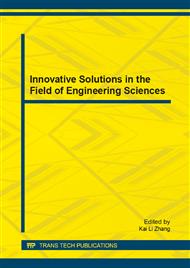p.795
p.799
p.805
p.814
p.819
p.823
p.828
p.833
p.837
The Effect of Bioprosthetic Heart Valve with Different Suture Densities
Abstract:
This study is to prolong the life of bioprosthetic heart valve. Bioprosthetic heart valve numerical models are established via computer aided design. Stress distribution of bioprosthetic heart valve leaflets with different suture densities are analyzed based on finite element method. The results show that suture density has a significant effect on the dynamic behavior of the bioprosthetic heart valve, which lead to different stress peak values, different stress distributions and deformation. The stress distributions of the cylindrical valve leaflets with different suture density is quite different and the peak von-Mises with 50 suture points is lower than the other three kinds of suture density. This work can be very helpful when manufacturing the bioprosthetic heart valve.
Info:
Periodical:
Pages:
819-822
Citation:
Online since:
June 2014
Price:
Сopyright:
© 2014 Trans Tech Publications Ltd. All Rights Reserved
Share:
Citation:


